#27. Music Streaming
Logic would say that music streaming is an invention of the 21st century. However, the idea of music streaming first appeared in New York City in 1897, with a 220-foot-long device called the Telharmonium. This giant device was invented by a lawyer called Thaddeus Cahill, and what it basically did was to transmit music across Manhattan to restaurants, hotels, and even some homes.

But how did Cahill make this possible? The music was performed live on an organ on the first floor of a building. However, the streaming device was placed in the building’s basement. According to a reporter from the time:
“[The Telharmonium’s] electric waves sent out by the great central machine are transformed, by the familiar device of the telephone, into sound waves, and reach our ears as symphonies, lullabies or other music, at the will of the players”.
#26. Text Message Slang
Adults often complain that teenagers write unproperly or make millions of grammar and spelling mistakes when messaging by WhatsApp, Facebook, or any other social media. And more often than not, a whole different form of slang is used on text messages. However, did you know that text message slang first appeared in 1890?

When the telegraph was invented in the 19th century, people were given the chance of communicating with friends and family who lived far away. But doing so was super expensive since customers were charged per letter. Thus, they developed the so-called “telegram style”. For example, if someone wanted to ask about the other person’s health, they would write: “Hw r u ts mng?”. Compared to this, even emoticons seem sophisticated!
#25. Ice Cream
Ice cream is one of the most popular desserts all over the world. And as crazy as it seems, this dessert was invented somewhere around 54 A.D. by the Roman emperor Nero Claudius Caesar. Of course, the ice cream back then was quite different from the one we eat today, and it wasn’t even called ice cream. The emperor sent slaves to the mountains to collect snow, and then his chefs would flavor it with honey or fruit.


However, the Chinese were the ones to add cream to the “ice cream”. Around the year 618 A.D. and during the Tang Dynasty, they began adding fermented buffalo and goat milk to the snow, which was then thickened with flour and flavored with different ingredients.
#24. Soda
The famous soda brands, such as Fanta, Sprite, or Coca Cola, were invented throughout the 20th century. However, the first carbonated beverage to be sold to the general public was created by a Swiss watchmaker called J.J. Schweppe. He created his “soda water” beverage in 1783 in Geneva. It proved to be so successful that six years later he moved to London and began selling it there.
In no time, other businessmen began copying his idea, so to beat his competitors, he introduced a new flavor called fizzy lemon. As regards the modern brands, the oldest one in the world is Dr. Pepper and not Coca Cola. The latter was created in 1892, while the former dates from 1885.
#23. Contact Lenses
Leonardo da Vinci is most famous for his masterpiece Monalisa, but did you know that he also invented contact lens? In his book titled Codex of the Eye, Manual D, published in 1508, Da Vinci explained that the cornea could be strengthened by putting it in contact with water. He further specified that this could be done by wearing glass hemispheres filled with water.


However, Da Vinci’s idea wasn’t tested until 1888, when German ophthalmologist Adolf Eugen Fick created the modern contact lens from blown glass. This glassed artifact was then covered by a layer of dextrose solution and then placed on the cornea to protect it.
#22. Showers
There are plenty of inventions that we use every day but that we take for granted. For instance, have any of you ever wondered who and when invented the shower? If we use the term loosely, Egyptians used a sort of shower 4,000 years ago, since rich people had slaves pour water on top of their heads with a bucket. However, the Greeks were the ones to take things to the next level.


It appears to be that initially, they showered by making a hole in the wall. The person showering would stand on one side of the wall, while a servant would pour water through the hole from the other side. But by 100 B.C., they had already developed indoor plumbing, including lead pipes and water pressure, which meant rich people were able to shower without the need of a servant.
#21. Color Film
It is often believed that the first colored films were Wizard of Oz and Gone With the Wind. However, in 2012, an amazing discovery proved otherwise. That year, the first color film in history was found in Great Britain’s National Media Museum. The film dated from 1902, which meant it had been stored there for 110 years, but no one had ever noticed!
The film was created by chemist and photographer Edward Raymond Turner, who used a process that he had patented in 1899. This process involved a rotating disk of color filters, which would create the film. Unfortunately, Turner died at the age of 30, so he couldn’t continue his research to perfect his technology.
#20. Central Heating
Those of you who live in the Northern USA, can you imagine your life without central heating? Well, it happens to be that heating mechanisms have been used during the last… 2300 years! In Ancient Rome, somewhere around 350 B.C., a system called hypocaust was invented. It involved raising the home’s floor two feet above ground level with pillars made out of brick or concrete. But how did everything work?


In that two-foot space, there would be furnaces that burn fire, and the hot air would consequently circulate under the floor and into flues built into the walls. It was a brilliant invention, but also a risky one. After all, people’s homes were practically resting on top of an endless fire pit!
#19. Brain Surgery
Brain surgery is one of the most complicated types of surgery, but in spite of this, technological developments made during these last few decades have made things a lot easier. But according to recent findings, brain surgery was invented somewhere near 5.000 BC.


In 1997, a group of archaeologists unearthed an ancient gravesite in the village of Ensisheim, France, and it contained a decomposed body of an adult man with two holes in its skull. The holes were found near the frontal lobe, and scientists concluded that they had probably been the result of surgery rather than a trauma.
#18. Seismoscope
The first earthquake-detection machine was designed by a Chinese inventor named Zhang Heng, somewhere around 132 A.D. It was a bronze vessel surrounded by eighty dragons, each of which had a small bronze ball inside its mouth. And below these dragons were eight bronze toads. It sounds more like a piece of artwork than a seismoscope, doesn’t it?
Archaeologists and historians still don’t agree on how this machine worked. According to the most accepted hypothesis, there was a pendulum in the center of the vessel, and the pendulum would move in case of seismic activity. This, in turn, would cause one of the dragons to spit out a ball and give a geographical direction regarding where the tremors were coming from. We’ll never know!
#17. Fax Machine
Fax machines became popular during the 1980s, but they were invented way before that. The first fax machine in history was created in 1843 by a Scottish mechanic and clockmaker named Alexander Bain. Reportedly, he used discarded mechanisms from clocks for his creation.

Twenty years later, physicist Giovanni Caselli invented a more sophisticated faxing device called the pantelegraph, which he gifted to Napoleon Bonaparte in 1860. It was first used to deliver the autograph of a famous French composer over a 140-km distance, from Paris to Amiens.
#16. Toilet Paper
Not everyone uses technological gadgets such as televisions or cell phones, but I’m sure all of you use toilet paper! But have you ever asked yourself when it was created? Back in the old days, toilet paper wasn’t a thing, and rich people used things such as wool and lace to clean themselves. The poor, on the other hand, often rinsed in rivers or used seaweed for that purpose.


However, China was the first country to use paper for self-cleaning. In the Zhejiang Province, toilet paper started being used as far back as 589 B.C. In fact, a thousand years ago, it was a practice that outsiders or foreigners found curious. Nowadays, it would be curious for a person not to use it!
#15. Automatic Doors
Automatic doors are one of the most practical inventions in history. People who live in big cities see them almost every day, either in supermarkets, shopping, or large stores. But have any of you wondered how old they are? The kind of door that we’re used to has been created in Texas in 1954. But the idea of a door opening by itself was first imagined and designed by a Greek mathematician named Heron of Alexandria, in the year 50 B.C.


Heron came up with the idea of a self-opening door as a way to add drama to the religious ceremonies. But, as you may imagine, the mechanisms involved in the opening of the door were quite rudimentary. Basically, it involved pulleys and buckets, and the intention was for the audience to believe that the doors had been opened by gods with invisible hands.
#14. Escalators
Apart from automatic doors, another thing that you always see in malls are escalators. The first escalator was invented by an American lawyer named Nathan Ames, although he named it “Revolving Stairs”. But even though Ames never really built one, a version of it – based on his sketches – premiered as a novelty ride on Coney Island, as far back as 1895.


This escalator was created by an American engineer named Jesse Reno, who named his creation “inclined elevator”. It was a vertical platform without any steps, and it featured handrails for people to grab on to so that they wouldn’t slide down.
#13. Video Games
Most children in the world – at least those who have access to electricity – know what a video game is, and many of them have played one at least once in their life. But against popular belief, video games have existed for more than half a century. Most people believe that the first of its kind was Pong in 1972, but this is not exactly true.
The world’s first video game was actually created in 1948 by a physics professor named Thomas Goldsmith Jr. He designed and patented an electronic game that was based on World War II military radars. Can you guess what its name was? Well, you’ll never guess it: The Cathode Ray Tube Amusement Device. He never raised enough money to release it in the market, which explains the fact nobody knows about it. But we must give him at least some credit!
#12. Tiny Digital Music Players
It’s pretty common to see people walking in the street listening to music on their iPods. The fact that this fabulous device was invented in California in 2001 is of common knowledge. But very few people know that there were other small digital music players before the release of the iPod.

The first device of its kind was the IXI System, created in 1971 by the amateur inventor Kane Kramer and James Campbell. It was the size of a cigarette pack, and its memory chip could store three-and-a-half minutes of music. That’s like half of a Pink Floyd song! Let’s be thankful that today’s devices have a bit more memory!
#11. Reality-TV
Several decades before Big Brother was released, PBS released the first reality TV show in the world. It was named An American Family and it was first released in 1973. To be honest, it was kind of dull. It followed the life of a housewife named Pat Loud, her husband Bill Loud, and their five kids, throughout a whole year.

Surprisingly, the show was a major success, reaching a peak of 10 million viewers per week. This series represented a turning point in the history of television, and it showed the market how fascinating the audience found to watch real-life people make a mess out of their lives. People have weird interests, don’t they?
#10. Submarines
We’ve already gone over several crazy facts, but nothing beats this: the first person to come up with the idea of a submarine was William Bourne… an innkeeper! He mentioned his idea in his book Inventions or Devices, published in 1580. This man’s submarine prototype was made out of wood, surrounded by leather, and powered by oars. However, he never had the opportunity to materialize his idea.


After that, in 1623, a British man named James I of England built was is regarded as the first submarine in history. It was basically a well-insulated rowboat that carried up to 12 men. This submarine traveled underneath the waters of the Thames River in London, reaching a depth of 15 feet.
#9. Vending Machine
Heron de Alexandria not only invented automatic doors but apparently, he also came up with the idea of vending machines! In the year 50 B.C., he invented a vending machine-type device as a way of making sure that people wouldn’t drink too much holy water at the Egyptian temples. But how did this machine work?


First, you had to put a coin in the top, and the coin’s weight would open a valve that let the holy water flow out. Eventually, the coin slid off the tray, and this movement caused the lever to snap back, interrupting the water flow. So, crazily enough, the world’s first vending machine gave you water instead of sodas!
#8. Batteries
The battery is another ordinary object that we use every day for different purposes, but do you know when it was invented? In 1938, archaeologists discovered the so-called “Baghdad Battery” in Baghdad, the capital of Iraq. The object they found dated from 200 B.C. What was it that they found, exactly?


The Baghdad Battery was a clay jar with an asphalt stopper, and an iron rod ran through the asphalt. Also, a cylinder made out of copper surrounded the asphalt. When the finding was taken to a laboratory to be analyzed, scientists discovered that the jar had been filled with vinegar. When they made replicas, they discovered that it was able to generate up to two volts of electricity. Amazing!
#7. Automobile
In 1908, the iconic Ford T became the first mass-produced car. However, automobiles go way back in time. In 1769, French engineer Nicolas-Joseph Cugnot invented something similar to modern cars. To be precise, it was a tricycle powered by a steam engine, but it only moved at two miles per hour, and it had to stop every 15 minutes to be recharged.

Two years after this magnificent invention, the first automobile accident was produced, when Cugnot crashed into a brick wall. After the accident, most investors lost interest. After all, it was very costly, and it was way slower than horses!
#6. 3D Films
3D films became widely popular during the beginning of the 21st century. However, this technique was invented way before. Already in 1953, the Hollywood classic House of Wax used 3D technology. Nevertheless, this invention goes even further back in time.


The first 3D cinematic feature in history was the silent film The Power of Love. The three-dimensional effects were created with a red-and-green anaglyph format, which required audiences to wear anaglyph glasses. Unfortunately, this innovative film was far from successful, as it was only screened twice.
#5. Animation
Parents from all over the world make their kids watch animated movies or TV shows. One of the first companies to ever produce animated films was Disney, who released its first feature film, Snow White and the Seven Dwarfs, in 1937. But animation has been created a long long time before that.


The thing is that you don’t need celluloid to make animation. Cave paintings discovered in Lascaux, France, which date from the Paleolithic age, feature drawings of horses that seem to gallop and birds that seem to flap their wings. However, these paintings seem to move only when viewed with the flickering grease-burning lamps that were used back in that time. And do you know when these paintings were made? In 19.000 B.C.! So animation is quite older than what we thought!
#4. Beer
There is no doubt that beer is one of the most popular beverages in most countries in the world. But this beverage is so incredibly old, that even the Sumerians drank it! According to historians, the ancient Mesopotamian civilizations drank beer as far back as 6.000 B.C. We can’t determine the exact date this trend began, but one thing is for sure: beer back then didn’t taste like it does today.

It appears to be that at the beginning beer tasted a bit sour. The reason behind this was that the brewing methods weren’t as sophisticated as they are now, so they didn’t keep out the bacteria. Thus, beer often had rotten smells, caused by a compound called 4VG. We’re lucky people got better at it!
#3. The Telephone
I know that most people currently use cell phones as the main means of communication, but it’s still common to have a wired phone in the house. But little do people know that this fabulous invention is over a century old. It was invented in the year 819 (after Christ, of course!).
It is generally said that the inventor of the telephone was a man named Alexander Graham Bell. However, this is only partly true. The world’s first telephone was invented by the Chimu civilization in Peru, and it was discovered during excavations carried out during the 1930s. If you don’t believe me, you should know that this phone is currently on display at the Smithsonian’s National Museum of the American Indian.
#2. Computers
It’s hard to picture life without computers, mainly because they have become a necessary item both for workers and students. Modern computers were first designed in 1989, but this invention is way older than we think. The first person to design a computer used it for much simpler things since he just wanted a machine that could calculate polynomial functions.

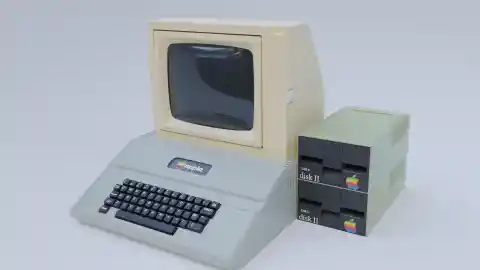
The person who created this machine was a British mathematician and mechanical engineer named Charles Baggage. He came up with the idea of a computer in 1833 while studying at Cambridge, and its function was similar to today’s calculators. It weighed 15 tons and it was made up of nearly 25,000 parts. Crazy, right?
#1. Social Media
Can you imagine a life without Facebook, Twitter, Snapchat or Instagram? Even though these apps are barely more than a decade old, a sort of social media was created in 1560 in The Netherlands. Can you guess how they called it? Alba amicorum, which is the Latin word for “friends book“. Almost like Facebook!
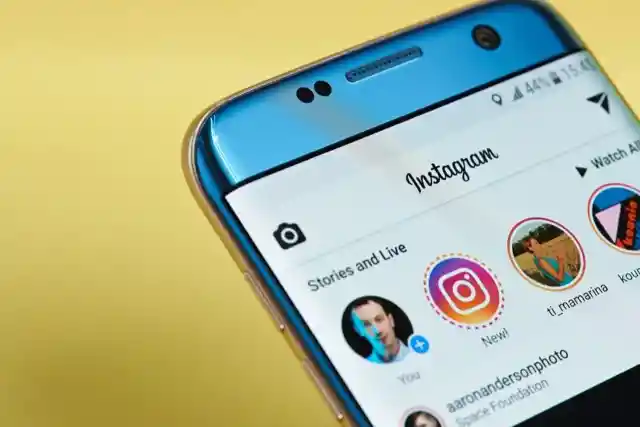

This invention worked in a similar way to today’s social media, with the tiny detail that everything was contained in real books that were passed from one friend to the other. When it was your turn, you could write gossip about your friend, tell him something personal, or even argue about politics. However, it’s not clear who came up with the idea.